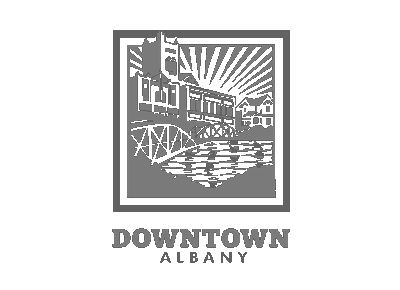If you are in the floodplain, odds are that someday your property will be damaged. Even a few inches of water can mean thousands of dollars in repair and restoration costs. Most homeowners insurance does not cover flood damage, and disaster relief funds cover only a small portion of flood damage. Flood insurance protects you from the financial devastation caused by floods. If you don't have flood insurance, talk to your insurance agent.
Everyone in the City of Albany is eligible to obtain flood insurance
Albany participates in the National Flood Insurance Program (NFIP) that makes available federally backed flood insurance for all structures, whether or not they are located within the floodplain. The premiums are discounted because Albany also participates in FEMA's Community Rating System (CRS) program, which requires floodplain management activities above and beyond the minimum NFIP standards.
Protect your investment
Flood insurance protects you from the financial devastation caused by flooding. It is also mandatory if you live in a high-risk area and have a mortgage from a federally regulated or insured lender.
Make sure you have contents coverage
Even if you don’t carry a mortgage, you should still have flood insurance to protect your belongings. If you don't have flood insurance, talk to your insurance agent. FEMA has the latest information about flood insurance policies and premiums at floodsmart.gov.
Flood Insurance
Federal financial assistance requires the purchase of flood insurance for buildings located within Special Flood Hazard Areas (SFHA) - a requirement that affects nearly all mortgages financed through commercial lending institutions. Even if you don't carry a mortgage, you should still have flood insurance. If you rent, your landlord is responsible for the structure but not your belongings.
Coverage applies whether flooding results from heavy or prolonged rains, snow melt, blocked storm drainage systems, levee dam failure, or other causes. To be considered a flood, the waters must cover at least two acres or affect at least two properties.
Flood insurance is available for properties within and outside of floodplains. Your property's flood risk is shown on flood hazard maps. Different types of policies are available depending on your flood risk:
- If you live in a high-risk area, you will need a Standard Policy. Most mortgage lenders will require that you have such a policy before they will approve your loan, including refinancing.
- Outside of high-risk areas, flood insurance is also available, usually at lower cost. A Preferred Risk Policy covers both a home and its contents. While you aren't federally required to have flood insurance in a low-to-moderate risk area, it doesn't mean you won't ever need it. Large floods often extend beyond the boundaries of high-risk areas and smaller floods occur outside high-risk areas as well. In fact, about 25% of all flood insurance claims come from low-to-moderate risk areas.
FEMA has the latest information about flood insurance policies and premiums at http://www.floodsmart.gov and FEMA's, "Answers to Questions about the National Flood Insurance Program."
If your property or home is above or outside the floodplain, you may qualify for a Letter of Map Amendment to correct the Flood Insurance Rate Map. LOMA and LOMR: Changes to Flood Insurance Rate Maps


